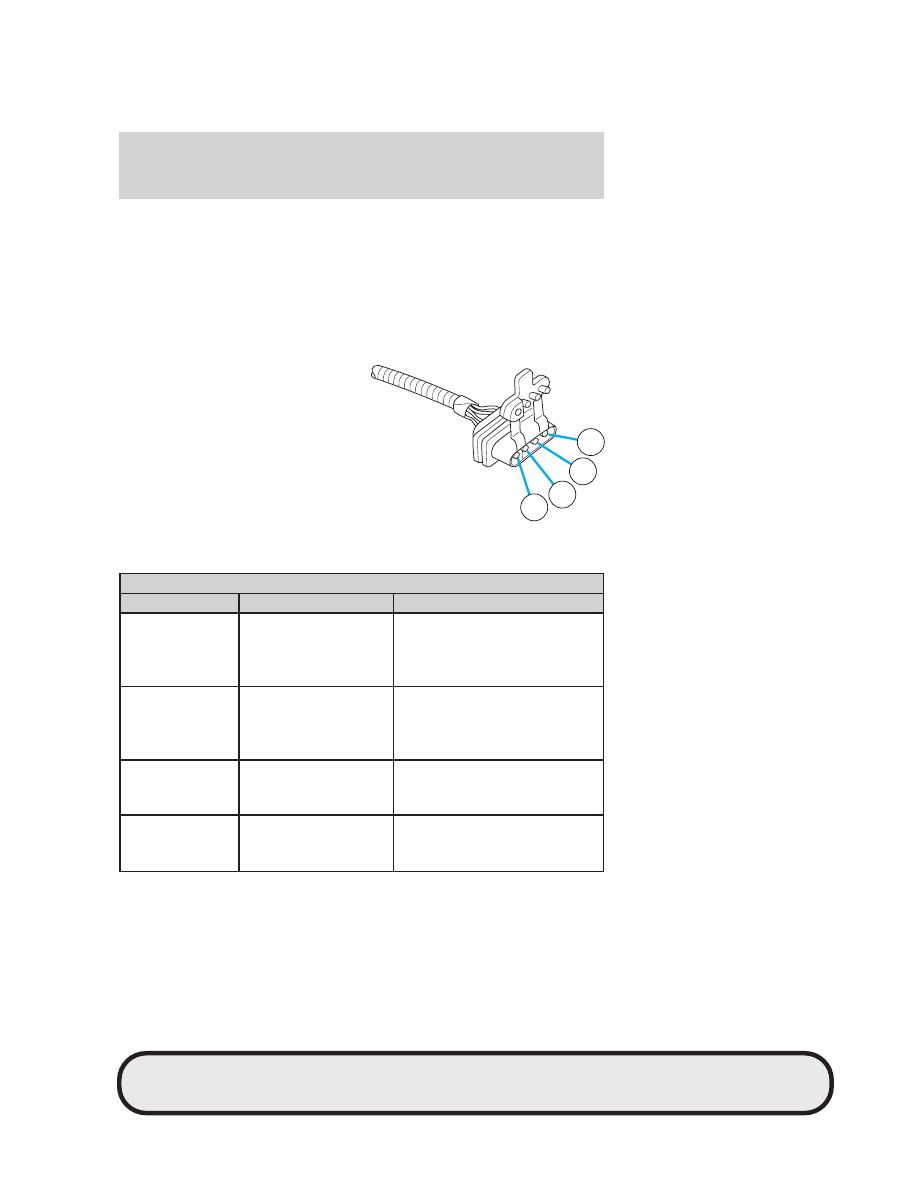Mazda B4000 Truck (2007 year). Manual - part 10

The rated capacities (as shown in this guide) for trailer towing with the
factory bumper are only valid when the trailer hitch ball is installed
directly into the ball hole in the bumper. Addition of bracketry to either
lower the ball hitch position or extend the ball hitch rearward will
significantly increase the loads on the bumper and its attachments. This
can result in the failure of the bumper or the bumper attachments. Use
of any type of hitch extensions should be considered abuse.
Trailer tow connector
The trailer tow connector is located
under the rear bumper, on the
driver’s side of the vehicle.
Refer to the following chart for information regarding the
factory-equipped trailer tow connector:
Trailer tow connector
Color
Function
Comment
1. Dark Green
Trailer right-hand
turn signal
Circuit activated when brake
pedal is depressed or when
ignition is on and right-hand
turn signal is applied.
2. Yellow
Trailer left-hand turn
signal
Circuit activated when brake
pedal is depressed or when
ignition is on and left-hand
turn signal is applied.
3. Tan/White
Tail lamp
Relay controlled circuit
activated when the park
lamps/headlamps are on.
4. White
Ground
Matching vehicle circuit
returns to battery’s negative
ground.
1
2
3
4
CIMS #476432
com_towconnect.ran
itdseq=175
art=ranmc721_a
REVIEW COPY ——
2007 B-Series (mbs), Owners Guide (post-2002-fmt) (own2002), Market: USA (fus)
PAGE: 149 OP: root EDIT SESSION: 1 DATE: AUG 3 2006 at 11:45 JOB: @ibm2/ford_pdm/CLS_ford/GRP_own2002/JOB_mbs/DIV_og
Tires, Wheels and Loading
149